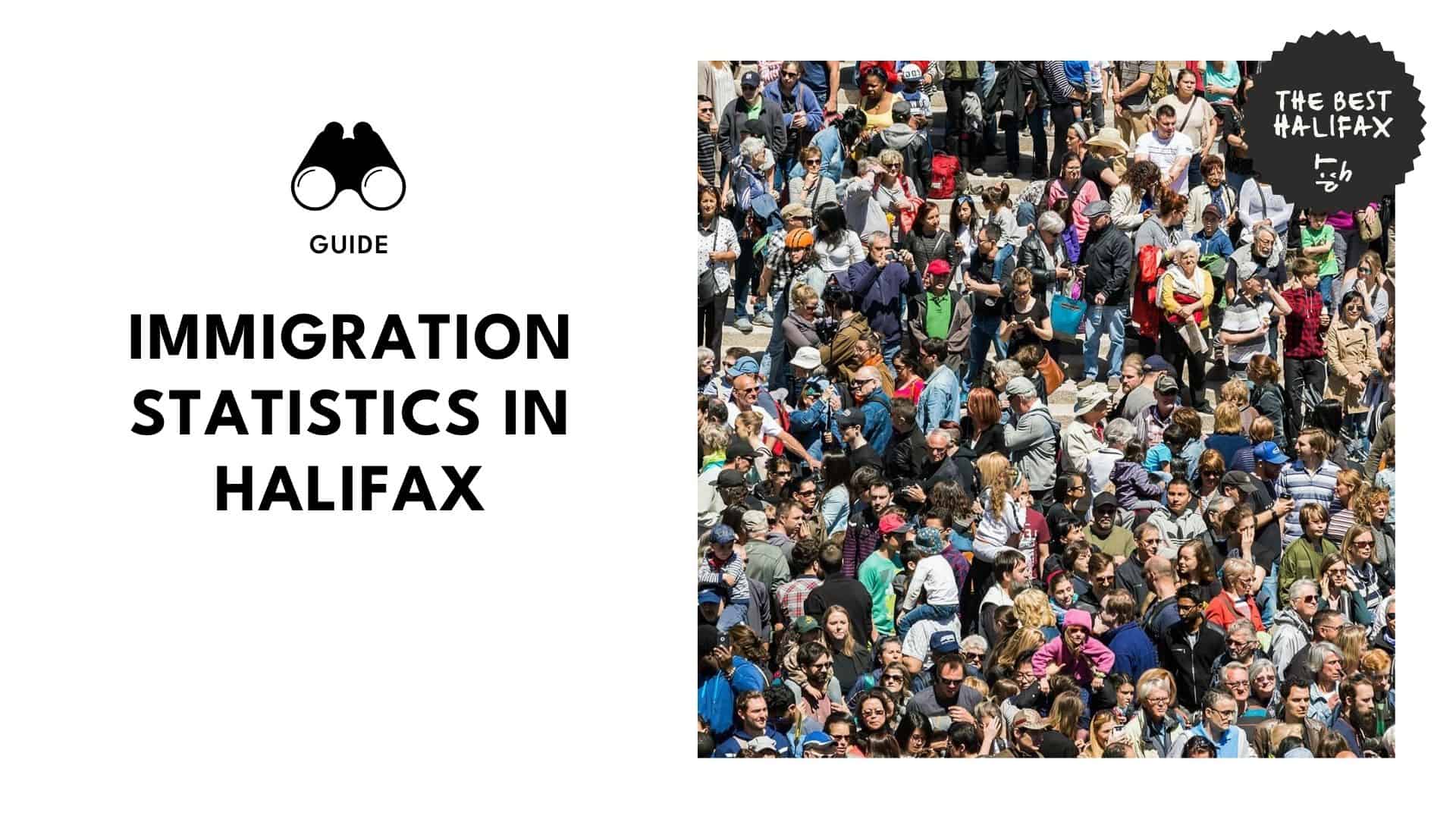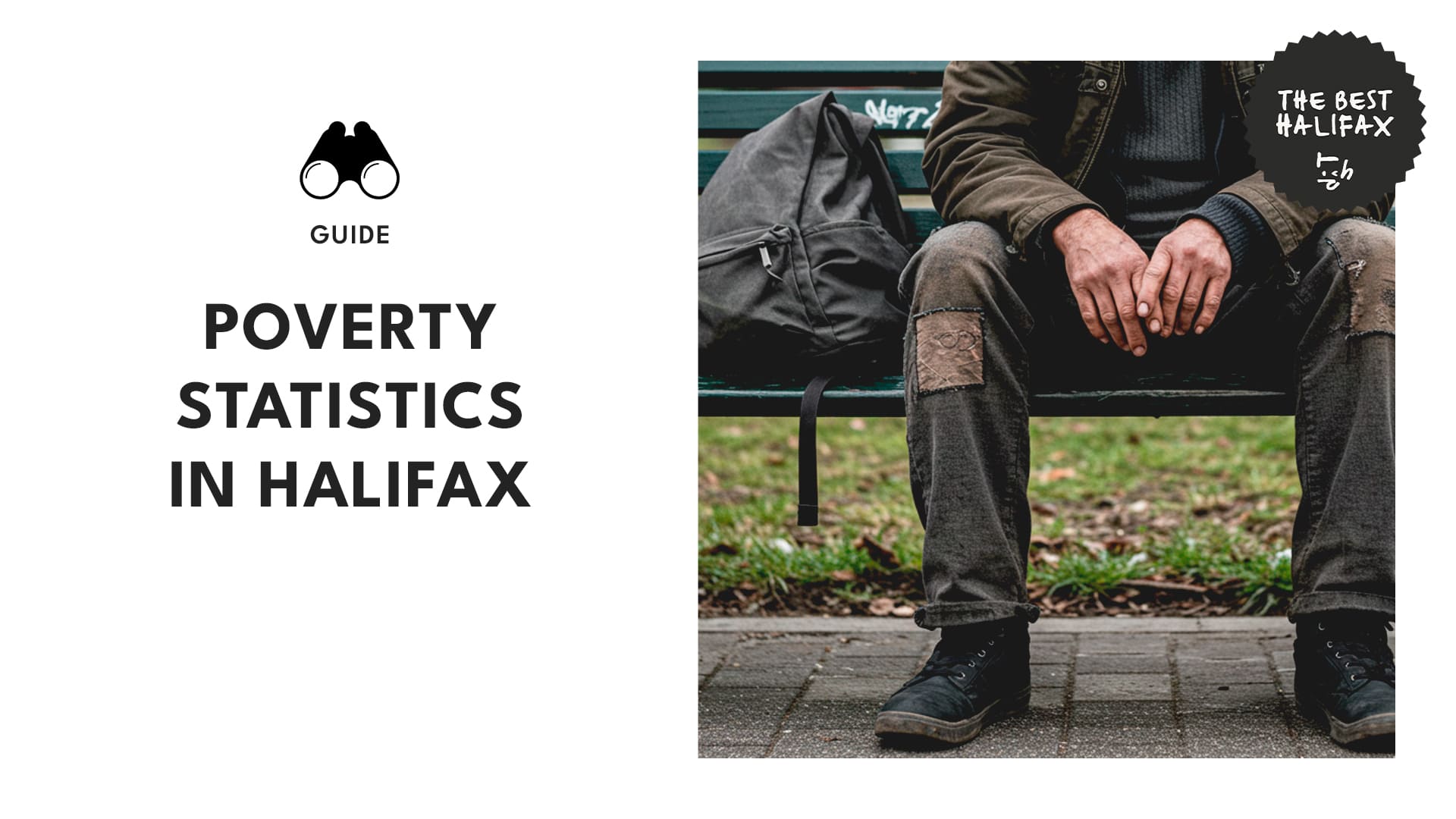Key Insights
| According to the Halifax Regional Municipality’s Office of Diversity and Inclusion, Halifax was home to nearly 80% of all new immigrants in Nova Scotia from 2020 to 2025. Data from the Government of Nova Scotia’s 2021 Census shows that no other city in Nova Scotia came close to Halifax’s immigration levels of 15.5% of the population. Statistics Canada reveals that much of Halifax’s growth over the past decade occurred between 2016 and 2021, with 18,135 new immigrants entering the city. The same report illustrates that the United Kingdom has the highest number of immigrants coming into Halifax, at 6,345 in 2021. A report by the Government of Canada shows that Halifax’s workforce increased by 14% from 2011 to 2021, with immigrants contributing a 62% increase during this period. |
The Halifax Regional Municipality’s Office of Diversity and Inclusion illustrates how immigration plays a critical role in Halifax’s long-term economic and social sustainability.
From 2018 to 2020, the province received around 17,000 immigrants. Most of these migrants settled in Halifax due to economic or social factors, such as being close to family or seeking refugee status.
As a result, the city has emerged as the main gateway destination for immigrants in Nova Scotia, as the city hosted nearly 80% of all new immigrants to the province from 2020 to 2025.
This trend in the concentration of immigrants highlights the strength of the city’s pull factors for immigrants, such as basic resources, employment opportunities, and settlement programs.
Furthermore, 89% of Nova Scotia’s migrants and non-permanent residents live in Halifax, further demonstrating its role as a destination for settling international students, temporary foreign workers, and permanent immigrants.
All of these trends illustrate Halifax’s changing demographic landscape, as migration rates continue to increase and further impact the city’s labor force.

Regional Analysis of Immigrant and Non-Permanent Resident Distribution in Nova Scotia
According to the Government of Nova Scotia’s 2021 Census, Halifax has the greatest proportion of immigrants and non-permanent residents in Nova Scotia, with this group amounting to 15.5% of the total population in the city.
Similarly, the city also leads trends in recent immigration. From 2016 to 2021, 4.1% of the population of the city was comprised of new immigrants.
The cities with the next highest numbers of recent immigration still had levels that were much lower than that of Halifax’s. For example, Kings, Lunenburg, and Antigonish only had rates at 0.9%, 0.8%, and 1%, respectively.
This shows that Halifax hosted around four times more immigrants than the next highest cities, which highlights the disparity in immigration trends across Nova Scotia.
Likewise, the percentage of non-permanent residents of Halifax is at 3.9%, and is also much higher than the rates in other cities. This rate also exceeds Nova Scotia’s average of 2.3%.
This highlights Halifax’s role as the primary destination for individuals on temporary visas, including international students and temporary foreign workers.
Aside from Cape Breton’s rate of 2.4%, no other city in Nova Scotia has more than 1.5% in this category. Moreover, Cape Breton’s rate is still 1.5 percentage points lower than Halifax’s number.
Antigonish is the sole other region that has a significant number of temporary migrants at 1.5%. Other cities in the province have percentages that continue to be much lower than Halifax’s rate.
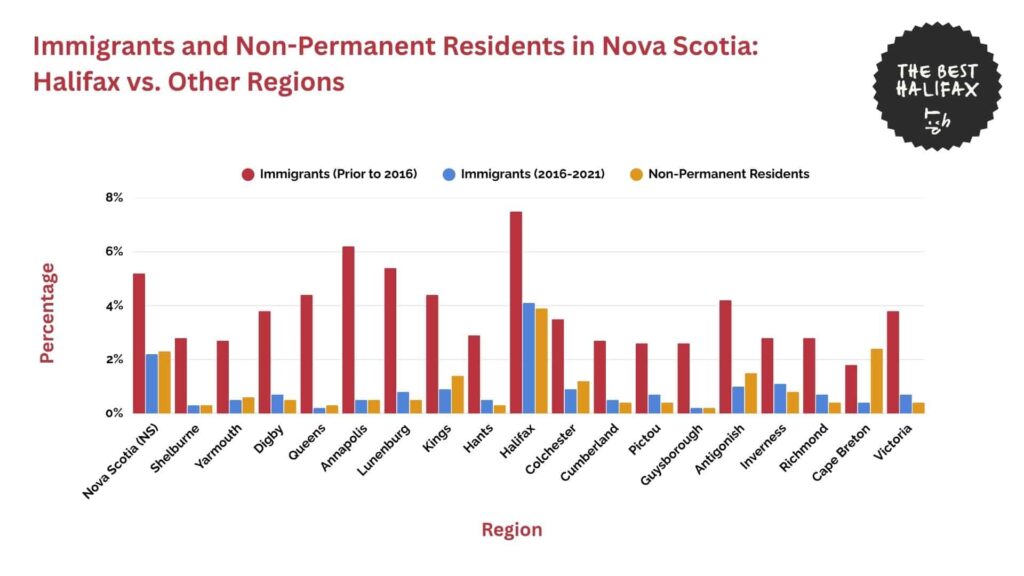
Immigration Trends in Halifax
According to Statistics Canada, Halifax has experienced a continuous growth in its immigrant population, with immigration trends rising over the years.
This increase is mainly attributed to newcomers who arrived in the past decade, with most between 2016 and 2021. A total of 18,135 new immigrants arrived in the city during this period.
Within this group, there were a total of 9,260 men and 8,880 women. This suggests that Halifax continues to be an attractive destination for immigrants of both genders.
Earlier waves of immigration have far fewer but still significant numbers. Up to 1980, there were 8,740 immigrants who settled in Halifax, with 4,180 men and 4,560 women.
Migration between the 1980s and 1990s also experienced smaller rates, with only 3,550 migrants from 1980 to 1990 and 4,920 from 1991 to 2000.
However, the rate of immigration accelerated in the 2000s. From 2001 to 2010, Halifax welcomed 9,175 new immigrants, which is almost twice the number in the 1990s.
This trend continued to grow over the next decade. From 2011 to 2021, 25,100 immigrants arrived, with 6,965 arriving between 2011 and 2015 and another 18,135 between 2016 and 2021.
In addition to permanent immigrants, Halifax also has a significant number of non-permanent residents, which amounts to 17,040 people.
With growing numbers of immigrants and temporary residents, Halifax is becoming a significant destination for new arrivals in Canada.

Demographic Breakdown
Statistics Canada gives insights into the top countries of birth for individuals migrating to Halifax.

From 2016 to 2021, Halifax experienced a 36% growth in the number of its immigrants, as the total number went up from 37,200 to 50,595.
The United Kingdom is the leading country of birth among immigrants, as its migrant population grew from 5,895 in 2016 to 6,345 in 2021. Despite this growth, its share of the immigrant population fell from 15.8% to 12.5%, which is a drop of 20.9%.
India saw the biggest growth in its share of the immigrant population, as this group grew from 1,875 in 2016 to 4,785 in 2021. This is a 155.2% increase, with its proportion almost doubling from 5.0% to 9.5%.
Meanwhile, China’s number of immigrants rose from 2,345 to 3,740, which is an increase of 59.5%. Its share in the proportion also went up from 6.3% to 7.4%.
The United States had a smaller rise, with their total population growing from 3,220 to 3,545. However, its proportion share fell from 8.7% to 7.0%, which is a decrease of 19.5%.
Similarly, the Philippines also experienced a rise in its population, which grew from 2,030 to 3,415 immigrants – a rise of 68.2%. Its share in the proportion also rose from 5.5% to 6.7% during the same period.
Syria experienced a higher increase, with its immigrant population increasing from 1,040 in 2016 to 2,085 in 2021. This is an increase of 100.5%, with its percentage increasing from 2.8% to 4.1%.
Notably, Nigeria saw the sharpest increase of 460.3%, rising from 290 to 1,625 immigrants. Its proportion also rose from 0.8% to 3.2%.
Conversely, Lebanon, South Korea, and Iran experienced only modest changes in their proportions of the immigrant population.
Lebanon’s proportion fell from 3.2% to 2.6%, although its immigrant population did rise by 11.2% from 1,205 to 1,340.
South Korea’s immigration population increased from 720 to 1,020, which is a 41.7% increase, while its percentage share increased from 1.9% to 2.0%.
Iran’s increase of 17.4% was lower, as they grew from 835 to 980 immigrants. However, its percentage share of the population fell from 2.2% to 1.9%, which is a decline of 13.6%.
These shifts show that Halifax’s immigrant population is becoming increasingly diverse, with increasing numbers coming from South Asia, Africa, and the Middle East.
Costs and Consequences of Slowing Immigration
The Government of Canada shows that between 2011 and 2021, Halifax’s population grew by 19%, which significantly outpaces the 5.2% growth rate of Nova Scotia as a province.
However, demographic shifts show that the city also saw a 33% increase in the senior population. This raises concerns about the future availability of working-age adults to sustain local services such as healthcare and social programs.
With an aging population, the need for long-term care, medical care, and social services is likely to increase, putting more of a financial strain on the city’s public funds.
Alongside this, a smaller workforce also translates to lower tax revenues, which may result in revenue shortfalls for the city government. This could also hinder business expansion and discourage new investments in Halifax.
Furthermore, the proportion of working-age adults in the city decreased by 5.4%. Without continued immigration, projections suggest that by 2031, Halifax could see a further 7% decline in working-age adults and a 34% increase in seniors.
This imbalance would result in fewer employees subsidizing an increasing number of pensioners, further putting a strain on the city budget.
Meanwhile, when the Halifax workforce increased by 14% from 2011 to 2021, immigrant workers contributed a 62% increase during this period. This shows how immigrants are playing a vital role in sustaining labor market growth.
Having a higher number of immigrant workers in the city may help in balancing workforce shortages, as this allows businesses to access a younger and larger labor pool.
Without immigration, Halifax could face severe workforce shortages by 2031, with a projected 36% decline in workforce size and a 32% reduction in jobs. This decline would significantly impact economic productivity and wage income generation.
Moreover, this decrease in job opportunities could also lead to lower consumer spending, which will also harm economic activity.
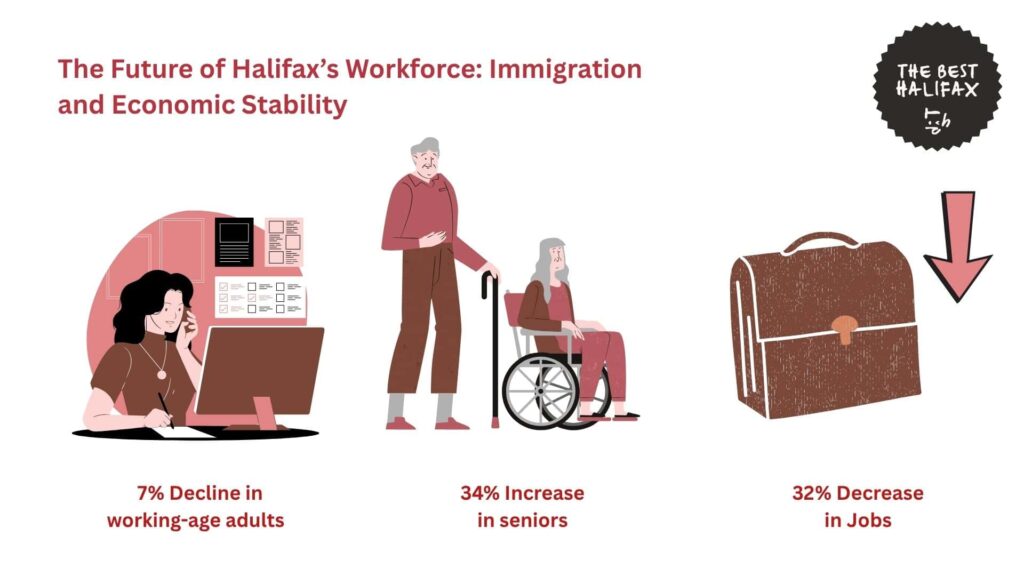
Enhancing Immigrant Retention in Halifax
Halifax’s long-term success in immigrant retention depends on fostering a welcoming and inclusive environment.
Currently, the Halifax Regional Municipality (HRM) is working to build stronger community connections to help immigrants settle successfully.
These initiatives are informed by the Diversity and Inclusion Framework, which ensures municipal services, workplaces, and partnerships are representative of the city’s diversity.
Its main initiatives include enhanced public services, increased job opportunities, and the fostering of cultural events that make Halifax more inclusive to different demographics.
Furthermore, providing equal access to municipal services is also on the agenda of the HRM. This ensures that everybody, including newcomers, gets the benefit of public services without any hindrance.
HRM also promises to advance a discrimination-free workplace, creating an environment where diversity is celebrated and every individual receives equal opportunity.
This is consistent with the objective of promoting internal and external partnerships so that the public and private sectors can make the city a more inclusive place.
Through these measures, Halifax aims to cultivate an environment where immigrants are able to integrate both economically and culturally into the society.
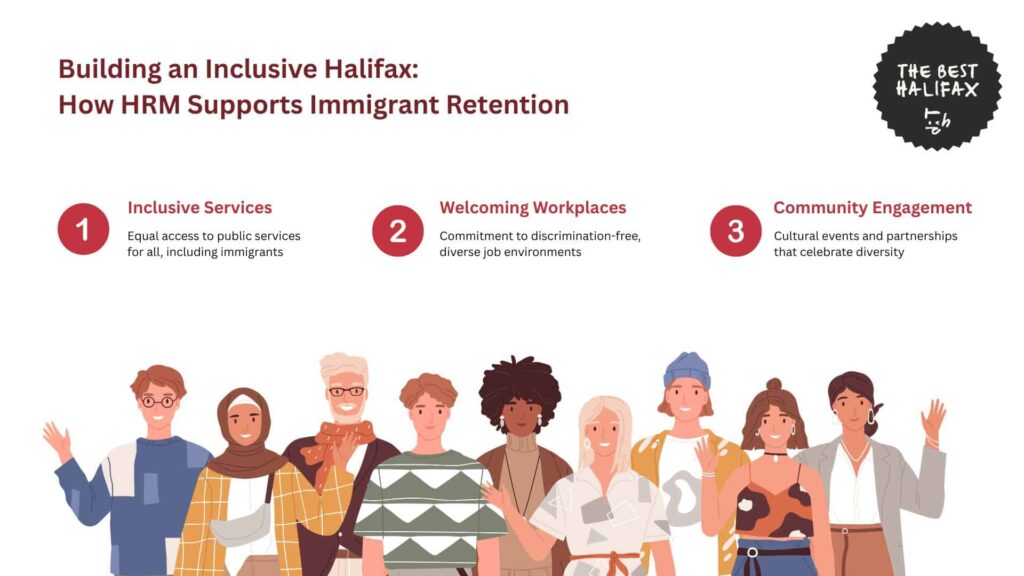
The Future of Immigration in Halifax
Halifax is expected to maintain its role as the primary settlement hub for newcomers in Nova Scotia.
Over the past five years, the city has welcomed 80% of the province’s total immigrants, with 89% of all migrants and non-permanent residents in Nova Scotia residing in Halifax.
These trends indicate that immigration will continue to be a key driver of population and workforce growth in the region.
Given the rising immigration rates and the city’s established infrastructure for immigrant integration, projections suggest that Halifax will experience sustained high levels of immigration through 2031, particularly in the economic and skilled worker categories.
By 2031, without immigration, Halifax could face a 7% decline in working-age adults and a 34% increase in seniors, leading to labor shortages and higher dependency ratios.
However, continued immigration is expected to offset these declines, ensuring a stable workforce and economic sustainability. If this trend continues, Halifax could see a further workforce expansion of 15–20% by 2031, provided immigration remains strong.
If immigration policies remain supportive, Halifax is likely to surpass the 50,595 immigrant population recorded in 2021 and could exceed 70,000 immigrants by 2031, ensuring the city’s continued economic and demographic stability.
References
- Halifax Regional Municipality. (2022). Halifax immigration strategy 2022–2026. Retrieved from https://cdn.halifax.ca/sites/default/files/documents/about-halifax/immigration-strategy-2022-26.pdf
- Government of Canada. (n.d.). Immigration matters in Halifax. Immigration, Refugees and Citizenship Canada. Retrieved from https://www.canada.ca/en/immigration-refugees-citizenship/campaigns/immigration-matters/local-economies/halifax.html
- Halifax Partnership. (n.d.). Halifax index: People. Retrieved from https://halifaxpartnership.com/research-strategy/halifax-index/people/
- Government of Nova Scotia. (2023). Nova Scotia statistics news release. Department of Finance and Treasury Board. Retrieved from https://novascotia.ca/finance/statistics/news.asp?id=18264
- Statistics Canada. (2021). Census profile, 2021 census of population, Halifax. Government of Canada. Retrieved from https://www12.statcan.gc.ca/census-recensement/2021/as-sa/fogs-spg/page.cfm?lang=E&topic=9&dguid=2021A00051209034
- Halifax Regional Municipality. (2022). Halifax immigration strategy 2022–2026. Retrieved from https://cdn.halifax.ca/sites/default/files/documents/about-halifax/immigration-strategy-2022-26.pdf
- Statistics Canada. (2021). Census profile, 2021 census of population, Halifax. Government of Canada. Retrieved from https://www12.statcan.gc.ca/census-recensement/2021/as-sa/fogs-spg/page.cfm?lang=E&topic=9&dguid=2021A00051209034
- Canadian Security Intelligence Service. (2022). CSIS diversity, equity, and inclusion strategy 2022. Government of Canada. Retrieved from https://www.canada.ca/en/security-intelligence-service/corporate/publications/csis-diversity-equity-and-inclusion-strategy-2022.html
